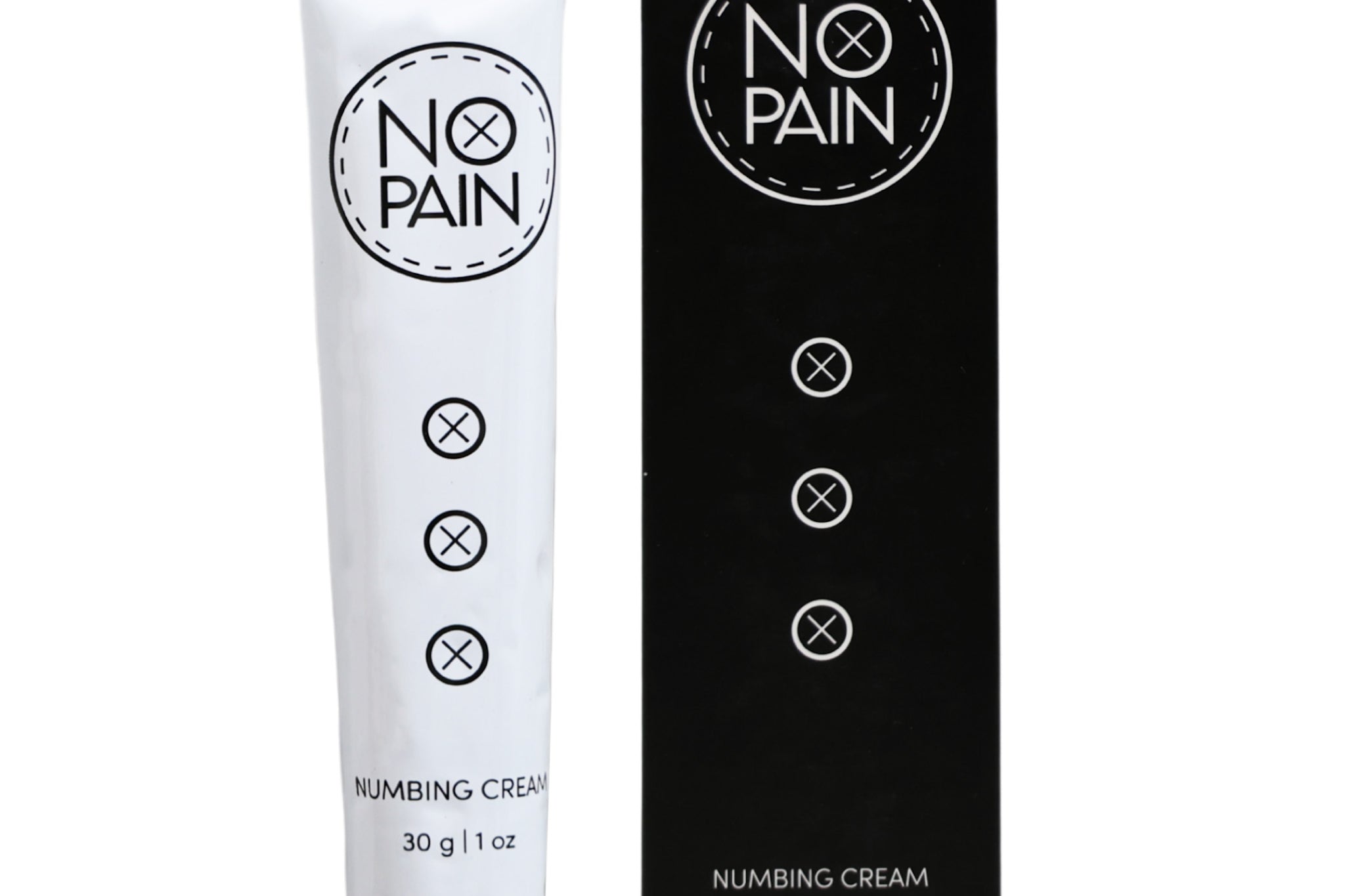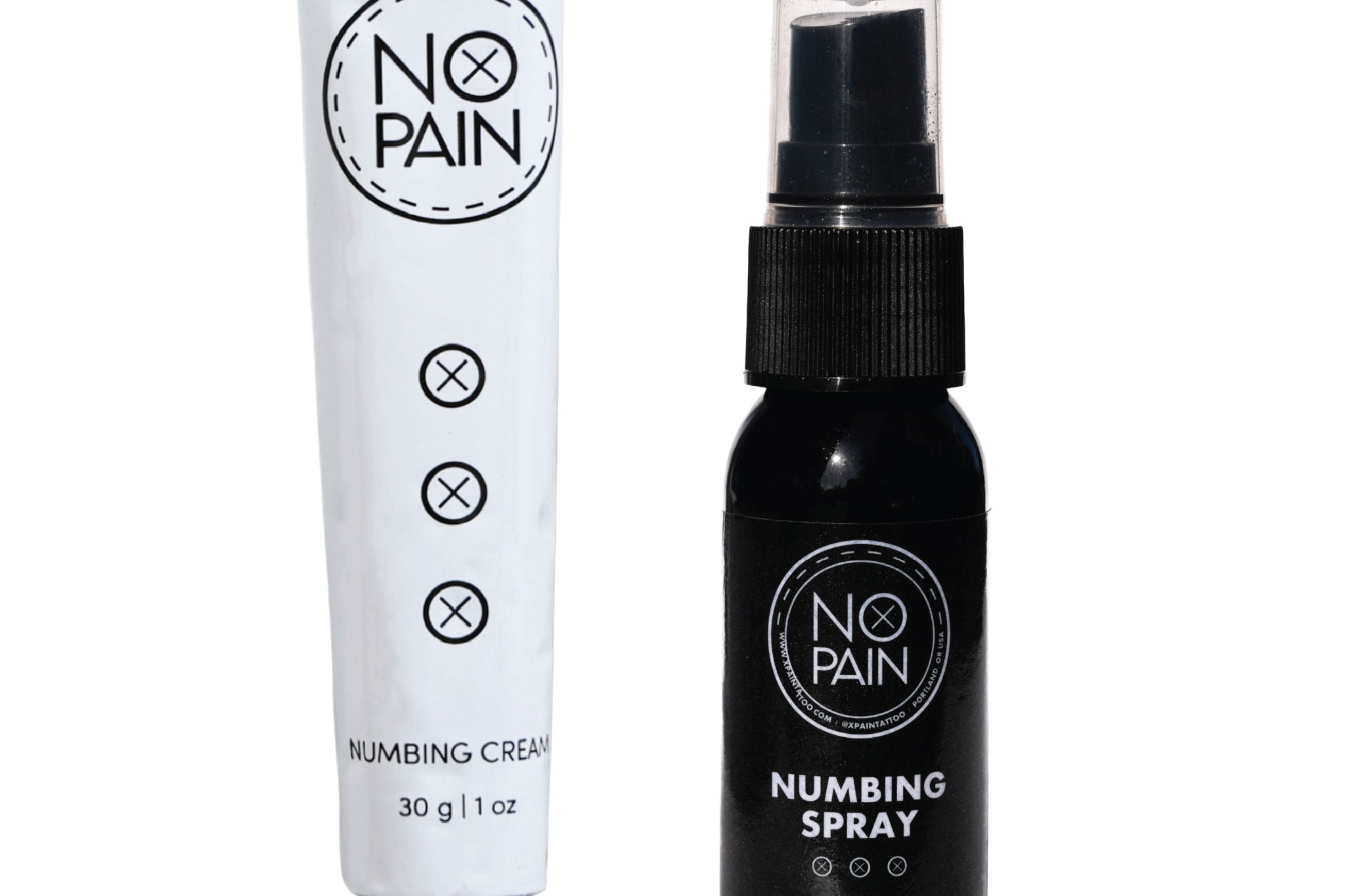You’ve just gotten a beautiful new tattoo, and you're wondering, "Is it really that bad to take a quick dip? How long do I actually have to wait to go swimming?"
While it might not be the answer you want to hear when the sun is shining, it’s the only safe one: You must wait until your tattoo is 100% fully healed before submerging it in any body of water.
For most people, this means a non-negotiable minimum of 2 to 4 weeks, but it can often be longer depending on the size, placement, and healing of your specific tattoo. Let's dive into the serious risks of jumping in too soon and how to know when your tattoo is truly ready.
Why You Must Wait: A New Tattoo is an Open Wound
The most important thing to remember is that a fresh tattoo is a beautiful, artistic open wound. The top layer of your skin has been punctured thousands of times, and it needs time to close up and regenerate.
Submerging a new tattoo before it’s healed is like soaking a large, fresh scrape in a public bath. It’s a guaranteed recipe for disaster that can lead to serious infection and permanent damage to your art.
The Dangers Lurking in the Water
Different bodies of water pose their own unique threats to your healing tattoo.
-
Pools & Hot Tubs: You might think a chlorinated pool is clean, but that's part of the problem. Chlorine is a harsh chemical that can severely irritate a healing wound, causing redness, excessive dryness, and inflammation. This can prolong the healing process and even cause ink loss. Hot tubs are even worse; their warm, stagnant environment is a perfect breeding ground for bacteria.
Beyond just redness and dryness, exposing your freshly tattooed skin to chlorine and pool chemicals can also trigger more unpleasant reactions—think major itching, oozing blisters, and even hives. In some cases, this irritation can result in conditions like irritant contact dermatitis. While these reactions are rarely severe, they’re definitely uncomfortable, and can make your tattoo’s healing process a lot rougher than it needs to be. -
Oceans, Lakes, and Rivers: This is by far the most dangerous option. Natural bodies of water are full of countless types of bacteria. Soaking a fresh tattoo in this water is a direct invitation for a serious infection from microorganisms that can cause significant skin damage and health complications.
-
Your Own Bathtub: Even the "clean" water in your own tub is not sterile and is home to bacteria from your skin and your plumbing. Soaking a new tattoo can oversaturate the delicate, healing skin. This can cause scabs to swell and come off prematurely, pulling the underlying ink out with them and leaving your tattoo looking patchy.
Does Salt Water Cause Tattoo Fading?
It's not just infection that's cause for concern—salt water brings its own set of risks for your fresh ink.
When you dunk a healing tattoo into the ocean, the salt can actually draw ink out of the skin, leading to colors looking faded or spotty before your beautiful design ever gets a chance to settle in. In much the same way, chlorine in pools acts as a chemical irritant, stripping away moisture and potentially leaching pigment from your tattooed skin.
Remember, overexposure to water—whether salt, fresh, or chlorinated—doesn’t just threaten infection. It dries out your skin, prolongs healing, and can trigger extra itching, peeling, or scabbing. All of these can chip away at the end result you were hoping for.
Sun Exposure: A Recipe for Fading and Irritation
There’s another summertime temptation to add to the "avoid" list: direct sunlight. Freshly tattooed skin is extra sensitive to UV rays, which can quickly cause colors to fade, lines to blur, and the healing area to dry out or burn. Heading out to show off your new ink at the beach can actually sabotage your tattoo before it’s even had a chance to shine.
Even light exposure during the first few weeks can dull your design and cause irritation or even blistering. Until your tattoo is fully healed, keep it covered with loose, breathable clothing and out of the midday sun. This isn’t the time for a Coppertone moment—save the sunbathing for your fully healed self.
Myth Busted: "Waterproof" Bandages Are Not for Swimming
A common question we hear is, "Can't I just put a waterproof bandage over it?" The answer is a firm no.
While adhesive bandages like Saniderm are water-resistant and great for showering, they are not designed for prolonged submersion. The pressure and movement from swimming or soaking can easily break the bandage's seal. This allows contaminated water to get trapped against your tattoo, creating a warm, wet incubator for bacteria—which is even more dangerous than just swimming with it exposed.
If You Absolutely Must Swim
If you find yourself in a situation where swimming is unavoidable, make sure your tattoo is fully covered with a waterproof dressing. As soon as you’re out of the water, remove the dressing right away and rinse your tattoo thoroughly with warm, fresh water.
Pat (don’t rub) the area dry with a clean towel to avoid irritation, then apply your preferred tattoo aftercare cream as usual. This extra care helps reduce the risk of infection, but remember—keeping your new tattoo out of the pool, lake, or ocean is always the best choice.
How to Know When Your Tattoo is "Fully Healed"
So, how can you be sure your tattoo is ready for the water? Look for these signs:
-
All scabbing and peeling has finished completely. There should be no more flaky skin.
-
The skin's texture has returned to normal. The tattoo should no longer be shiny, waxy, or tight. It should feel just like the skin around it.
-
It is no longer sore or tender to the touch.
When in doubt, wait another week. A little extra patience is always better than risking your health and your art.
What If You Swam Too Soon? Essential Aftercare Steps
Let’s say you’ve slipped up—maybe you swam before your tattoo was fully healed, or you just couldn’t resist that cannonball. Don’t panic, but do take these steps to minimize potential damage:
- Rinse Carefully: As soon as you leave the water, gently but thoroughly rinse your tattoo with lukewarm, fresh water. This helps wash away any lingering bacteria, chlorine, or salt that may have come into contact with your skin.
- Dry With Care: Blot the area dry using a clean, soft towel or paper towel. Avoid rubbing, as this can pull off scabs or irritate the healing skin.
- Apply Aftercare Cream: Once the tattoo is dry, apply a thin layer of your regular tattoo aftercare ointment (like our Soothing Gel, or Aftercare Balm). This helps lock in moisture and provides a protective barrier.
- Monitor Closely: For the next several days, keep an eye on your tattoo for any signs of redness, swelling, pain, or discharge. If you notice unusual symptoms, consult your tattoo artist or a healthcare professional right away.
Remember, the best cure is prevention, but if you end up swimming early, fast and gentle aftercare is your new top priority.
Speed Up Your Heal to Get Back in the Water Faster
While you can't rush your body's natural healing timeline, a disciplined and high-quality aftercare routine is the single best way to ensure your tattoo heals as efficiently and cleanly as possible.
The goal is to prevent infection and avoid heavy scabbing, both of which will significantly prolong your time out of the water.
-
Keep It Clean: Washing your tattoo 2-3 times a day with a gentle, antimicrobial cleanser like our No Pain Tattoo Cleansing Foam is your first line of defense against infection.
-
Keep It Moisturized: A tattoo that is kept properly hydrated with our No Pain Tattoo Soothing Gel and No Pain Tattoo Aftercare Balm will heal with light, healthy peeling instead of thick, ink-pulling scabs.
Our No Pain Tattoo Aftercare Bundle provides everything you need to promote a fast and complication-free heal.
The Verdict: Is one afternoon at the pool worth risking a serious infection and permanently damaging your expensive new art? The answer is always no. Be patient, follow a great aftercare routine, and protect your investment. The water will still be there when your tattoo is beautifully healed and ready for a lifetime of showing off.




